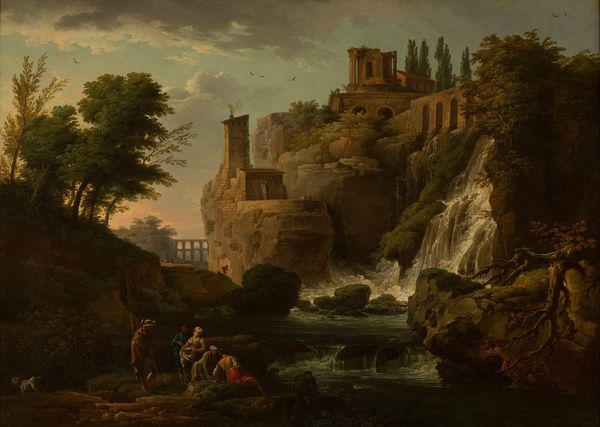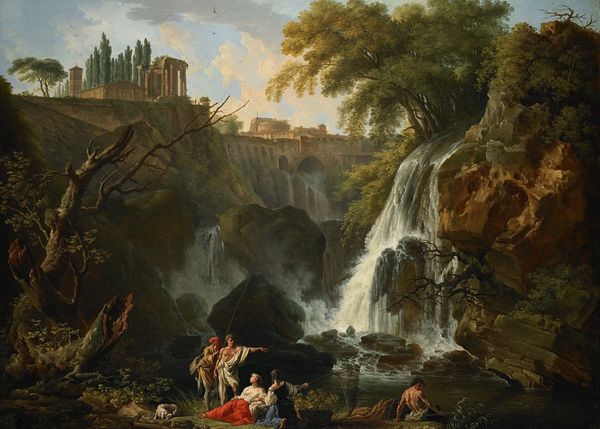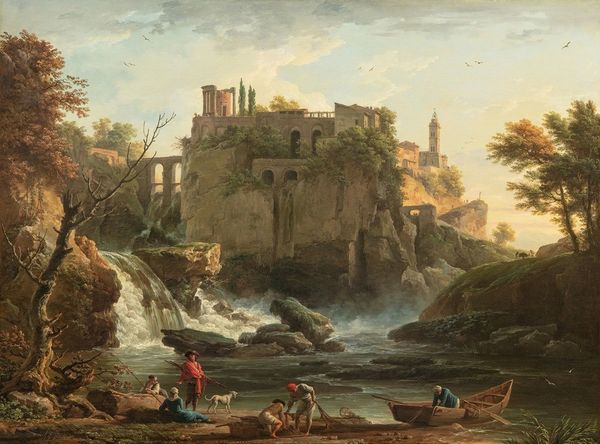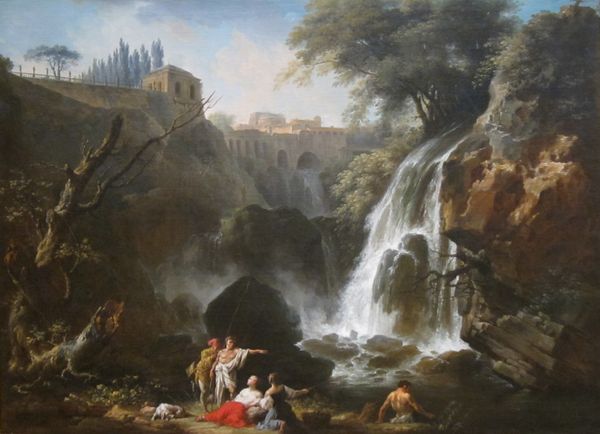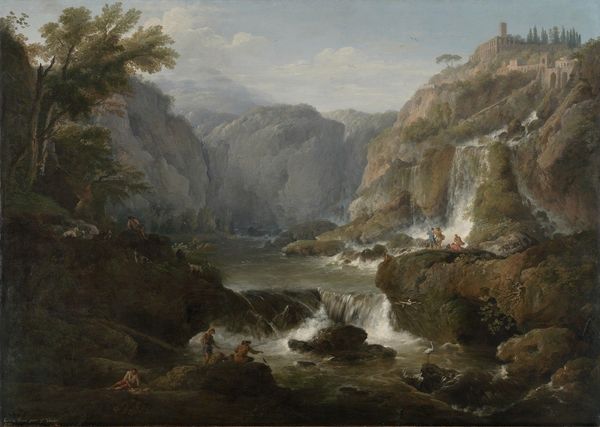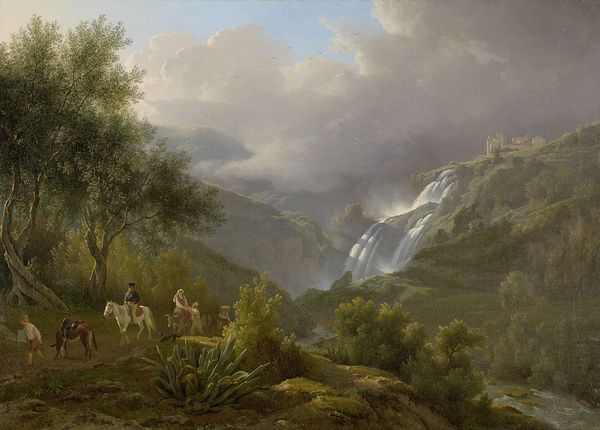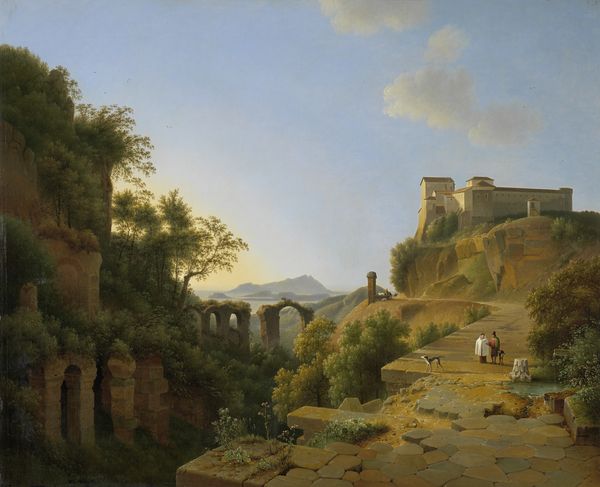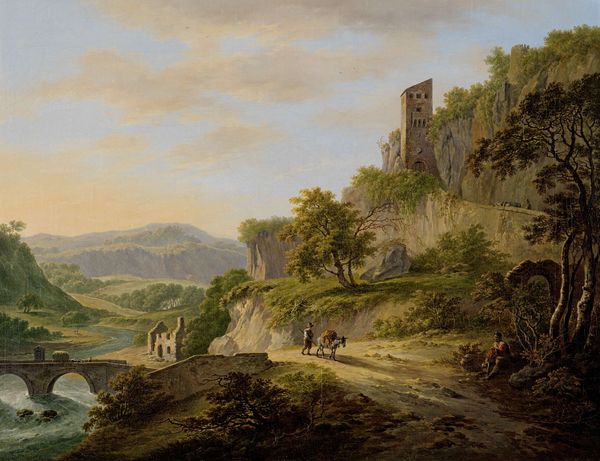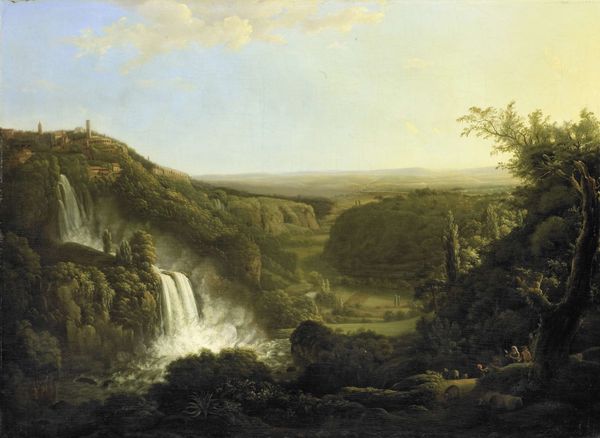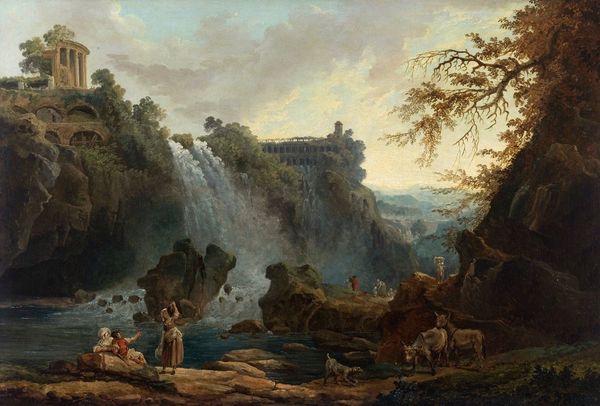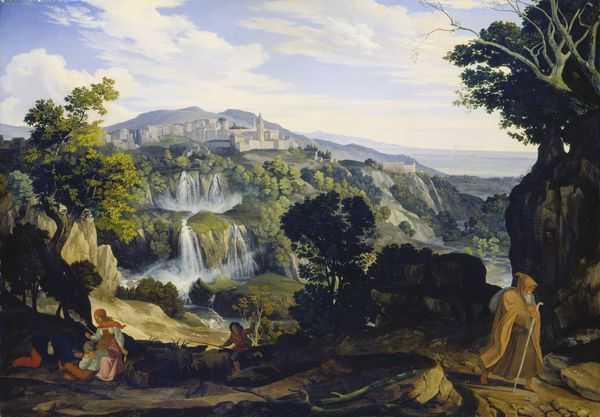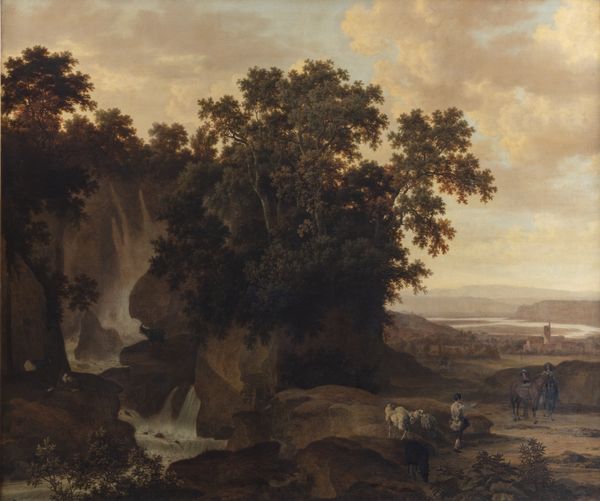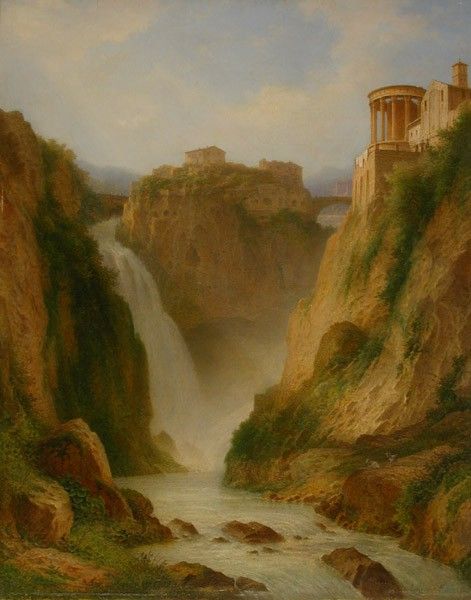
plein-air, oil-paint
#
plein-air
#
oil-paint
#
landscape
#
waterfall
#
oil painting
#
romanticism
#
cityscape
#
genre-painting
#
watercolor
Dimensions: height 101 cm, width 141 cm
Copyright: Rijks Museum: Open Domain
Curator: "The Waterfall at Tivoli" by Abraham Teerlink, created in 1824 using oil paint. It's such a classically romantic landscape piece; the scene is bathed in a gentle light, almost idyllic. What strikes you most about it? Editor: I love the contrast between the powerful waterfall and the tiny figures in the foreground, going about their daily lives. It feels almost like a stage. How do you interpret this work in its historical context? Curator: I think this painting engages with complex ideas about power and landscape, typical of its time. Teerlink places working-class people within the picturesque landscape of Tivoli, prompting us to consider ideas around labor and their relationship to both nature and the burgeoning urban centers in the distance. It prompts questions about class, access, and who gets to experience this sublime landscape. Do you see how the arrangement almost positions the people as features *within* the landscape? Editor: That's a really interesting point! It almost feels like they're part of the scenery, not necessarily active participants in it. Does that have something to do with the artistic conventions of the time? Curator: Absolutely! This reflects the broader social order, where the lives and labor of the working class were often romanticized or rendered invisible in the pursuit of an idealized landscape. Think about how often women were represented versus how often they held positions of power. Now, looking at this, how might we connect those dots and ask what narratives are being subtly reinforced here? Editor: Wow, I hadn't considered it in that light before. Seeing the painting as a statement on class and power relations opens up a whole new layer of understanding. I thought it was just pretty scenery! Curator: Exactly! And recognizing these hidden narratives is essential. I see my role as less of one who shares and provides immutable facts but one who poses generative questions about how images engage with our realities. Editor: I completely agree. It’s not just about admiring the beauty, but about understanding the social and historical narratives woven into the artwork itself. Thank you; I'll never look at landscape paintings the same way again!
Comments
rijksmuseum about 2 years ago
⋮
In 1807 Abraham Teerlink received a grant from Louis Napoleon to travel to Italy. After the King’s abdication, he decided to stay there and became a highly success-ful landscape painter. These two views of Tivoli, near Rome, are pendants. On top of the hill is the village of Tivoli, and in the background is the circular Temple of Vesta, goddess of domestic harmony.
Join the conversation
Join millions of artists and users on Artera today and experience the ultimate creative platform.
